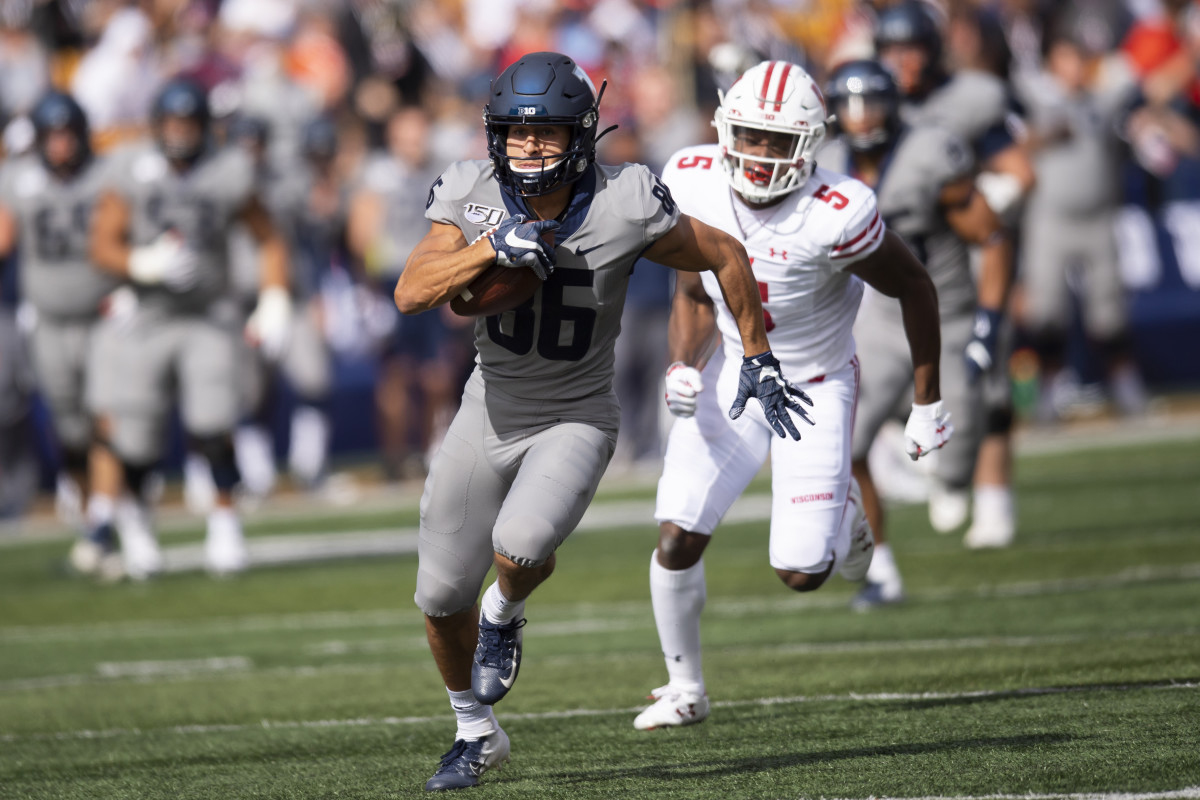Protocols For Illini Workouts in COVID-19 Era Defines College Football’s New Normal
CHAMPAIGN, Ill. -- Donny Navarro just needed nothing more than to hear the sound of a whistle.
A single sound of a whistle followed by the loud yelling of Illinois football strength and conditioning coach Lou Hernandez was all the Illini junior wide receiver desired to hear for motivation during the first on-field days of voluntary summer workouts.
“So it's kind of bringing back (the emotions) of 'oh, we're back so here we go',” Navarro said. “It’s definitely exciting for sure. When you hear his voice and you hear his whistle, it’s like, ‘All right, it’s time to grind.’ You’re with your guys, your teammates.”
The coronavirus pandemic has seen a lot of attention being paid across the country to these voluntary workouts being done mostly to supplement the time lost due to the cancellation of spring practices but also partially to prove safety regulations can be used to have athletes on a college campus.

Illinois junior defensive tackle Jamal Woods started out his Zoom video conference call with the media by first pointing out that there is very little about these workouts conceptually that are voluntary. Whether players are trying to establish roles, starting jobs or simply trying to learn how high conditioning levels need to be at Power Five Conference football program, the first and only way to get positive grades relayed back to the coaches is by attendance.
“They were saying the workouts were voluntary but when they say voluntary that’s really like mandatory for me,” Woods said. “This whole thing, COVID-19, has changed a lot of things. We can't do a lot of touching. We're limited to a single-digit number of guys in the weight room together. It's just something we are going to have to adapt to."
University of Illinois athletics officials have refused to release numbers or specific names of players that have returned to the Champaign-Urbana campus for these voluntary workouts but the veteran players reported last week, and, according to social media, the freshmen players began to report this week. U of I athletics officials are also refusing, citing medical privacy laws as the formal reason, to report any positive COVID-19 tests.
“They were saying the workouts were voluntary but when they say voluntary that’s really like mandatory for me,” - Illinois junior defensive tackle Jamal Woods
The COVID-19 procedures and protocols have created a new normal when it comes to workout schedules that now must involve a single-digit number of players in the weight room. Each player is given his own weight rack to work on specific reps. The players are required to wear safety masks in and out of the Smith Football Center, which has prohibited any use to the second floor of the building. Their body temperatures are monitored in the facility and in the dormitories they were quarantined in for multiple days. And before any of that has taken place, the Illinois football players were given a COVID-19 test that will be administered multiple times during this summer workout period.
“Everybody’s seen the videos of the Q-tip thing inside the nose,” Woods said. “It goes back pretty deep. I never knew my nose was that deep. It was all right. It got better the second time.”
Camaraderie during these workouts are a new normal for football players that love to support each other during significant lifts or runs. Fans are used to seeing videos of a player doing a big weight lift and suddenly as after the bar is placed back on the rack, the player is mobbed by excited teammates. No longer are teammates allowed to be less than six feet apart during conditioning drills or time in the weight room.
Navarro is used to the dog pile reaction of teammates after he was the subject of that kind of excitement during a team meeting on Nov. 7 when he was awarded a football scholarship after spending the better part of his first two seasons at Illinois as a preferred walk-on transfer from Valparaiso. Navarro said Tuesday he has remained on scholarship for the upcoming 2020 season and anticipates that will remain the case for the remainder of his eligibility.
“It’s definitely a change,” Navarro said. “It’s definitely something we all have to keep in the back of our minds. We’re not allowed to get in close contact with guys and we’re taking surveys as we come into the building so our training staff be notified that if maybe there are symptoms, then hold on, let’s treat this the right way.”
The biggest change is no workouts with a football. Scientists, along with federal, state, and local agencies and public health officials, have already warned the simple transmitting and spread of this virus could happen through third-party bodily contact. This means a quarterback simply tossing a ball to a receiver could put those two people at a level of risk even if one or both of them are asymptomatic. Therefore, precision timing and chemistry from Illini starting quarterback Brandon Peters and his receiver group will likely need to wait at least another month before a football can be introduced into play.
“That process is yet to come...we’re not there yet as far as the health process goes,” Navarro said. “I’m finding ways in my apartment here to work on ball drills and increase my hand strength. We’ll get there eventually. It’s a sacrifice right now but you have to find other ways to get better.”
